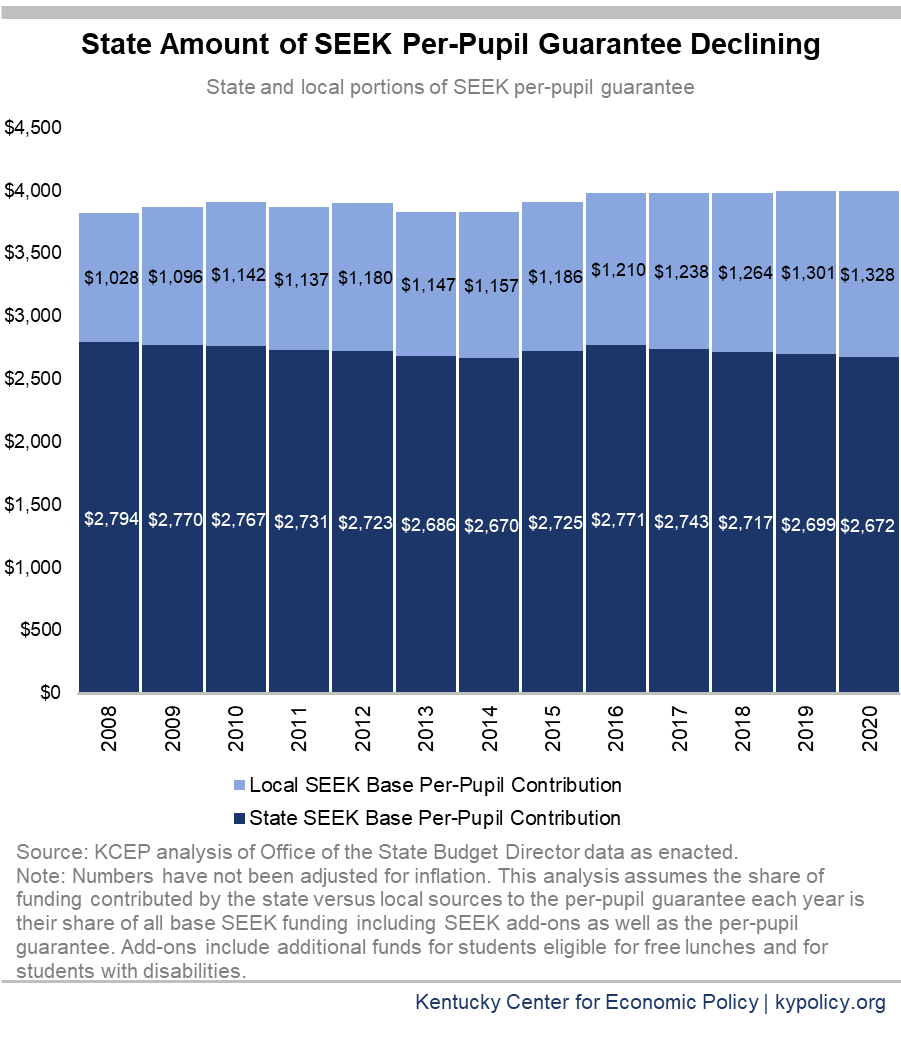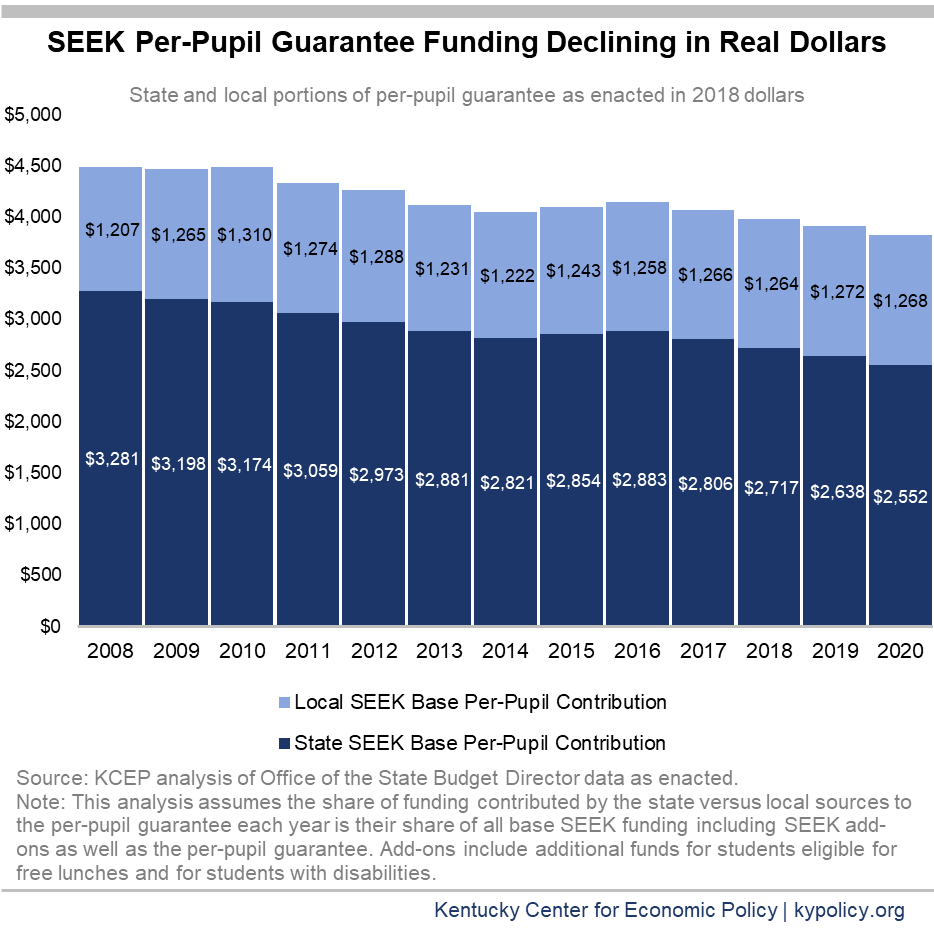Ever since the new state budget passed last spring, we’ve heard claims that Kentucky’s legislature funded K-12 education at “historic levels.” Those making such claims typically point to one part of K-12 funding referred to as the “SEEK base per-pupil guarantee.” The guarantee refers to core funding for schools set at $4,000 per student in the new budget.
However, pointing to that number as evidence of increased state investment in education is inaccurate. The per-pupil guarantee is made up of both state and local funding, and while the total per-pupil guarantee has reached $4,000, the dollar amount and share funded by the state have declined.
The graph below shows that while the per-pupil guarantee has gone up by $178 since 2008 — from $3,822 in 2008 to $4,000 in 2019 and 2020 — the average state portion is going down, even without adjusting for inflation.
- The state portion dropped by $122 between 2008 and 2020, while the local portion grew by $300.
- As a share of base SEEK funding, the state’s portion dropped from 73 percent to 67 percent, while the local share grew from 27 percent to 33 percent.
When inflation is taken into account — an important consideration since the cost of educating Kentucky’s students increases with prices — the total per-pupil guarantee (state and local combined) has been dropping for the last decade. As shown in the graph below, the $4,000 per-pupil guarantee has been cut $667 per student since 2008, and state funding has declined by 22 percent.
The SEEK per-pupil guarantee makes up about 37 percent of what the state puts into K-12 schools. Other areas have also experienced cuts, ranging from school transportation to preschool, extended school services, textbooks and teacher professional development. The state is clearly cutting education funding. Instead of “historic” funding levels, as some are claiming, the data shows a “historic” trend of disinvestment.





